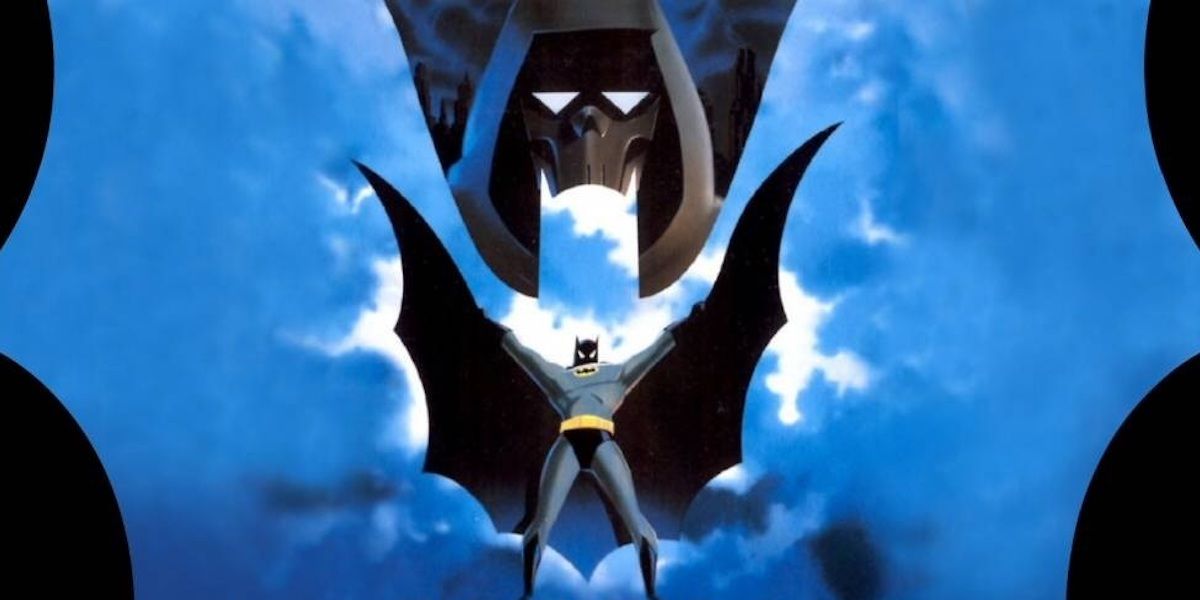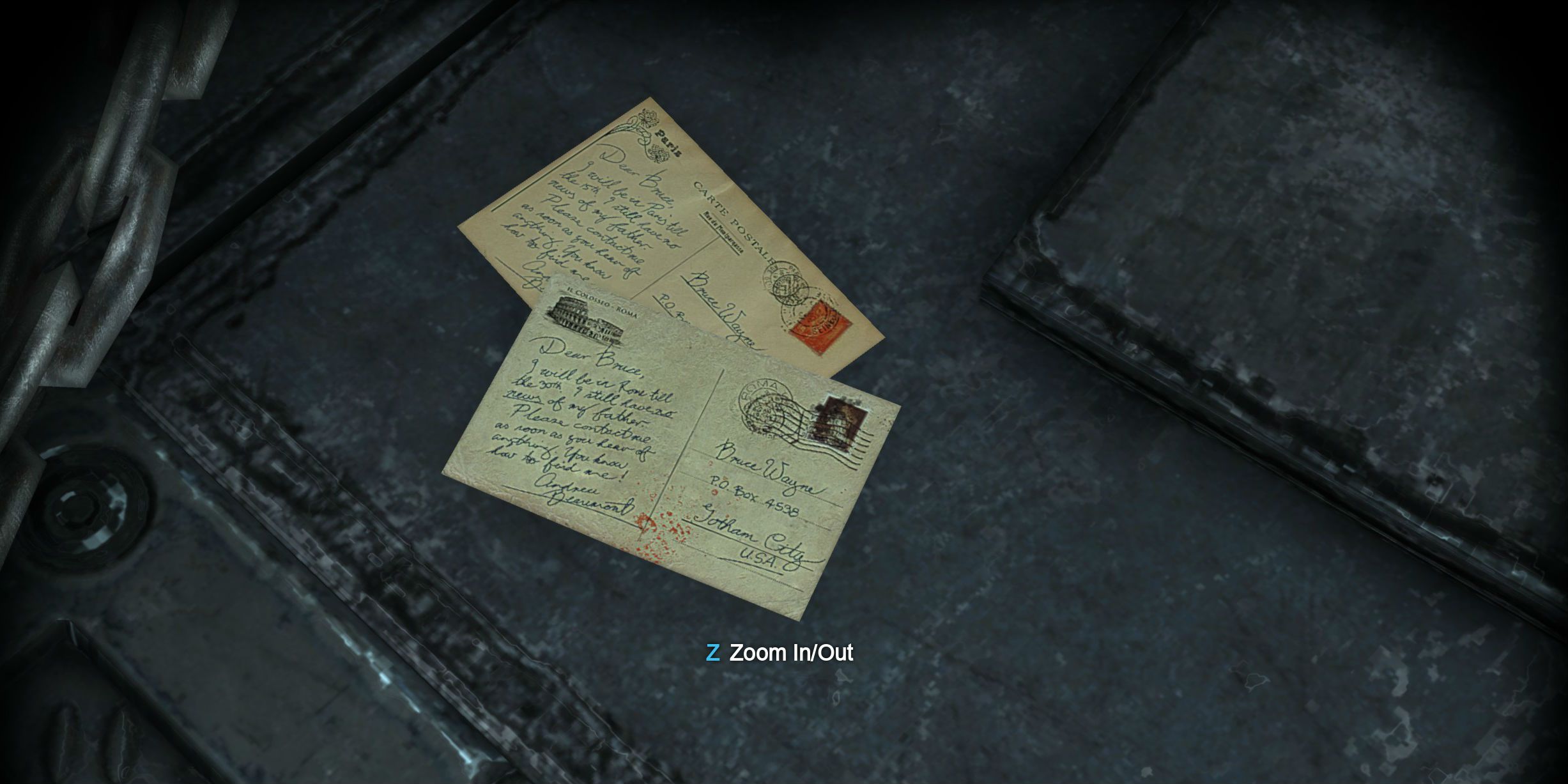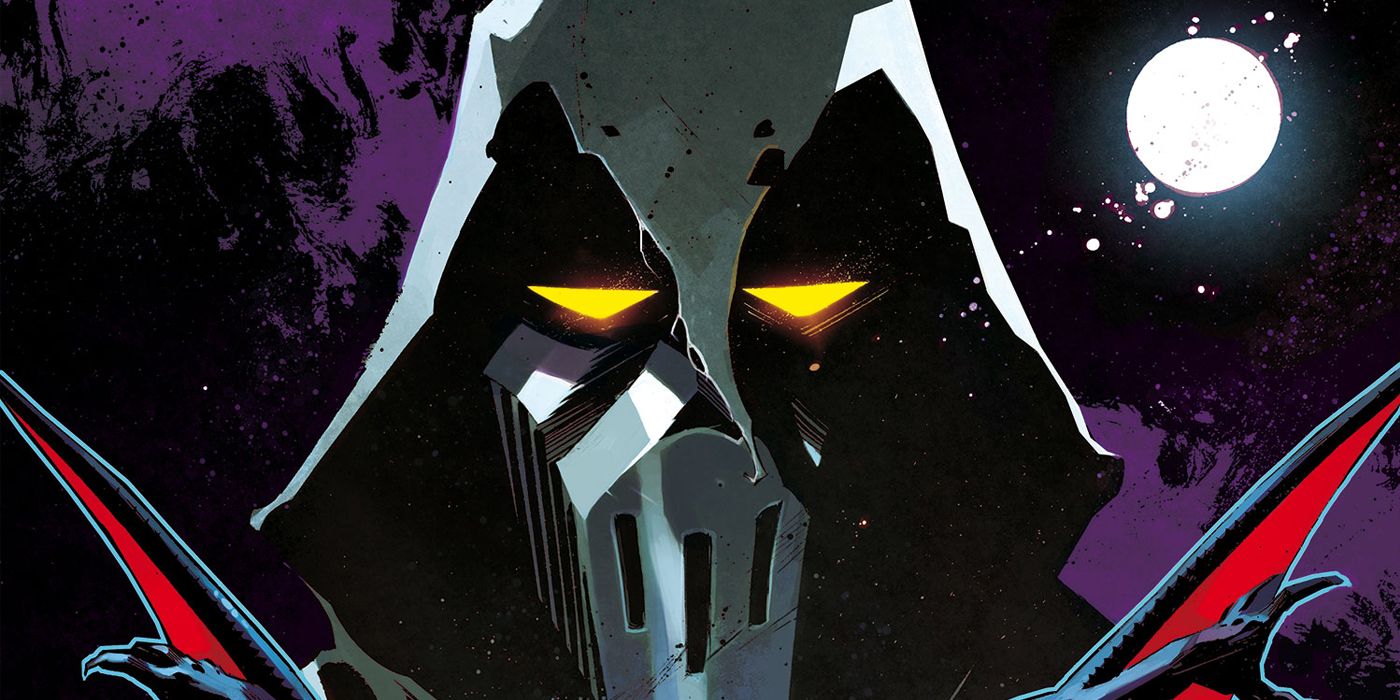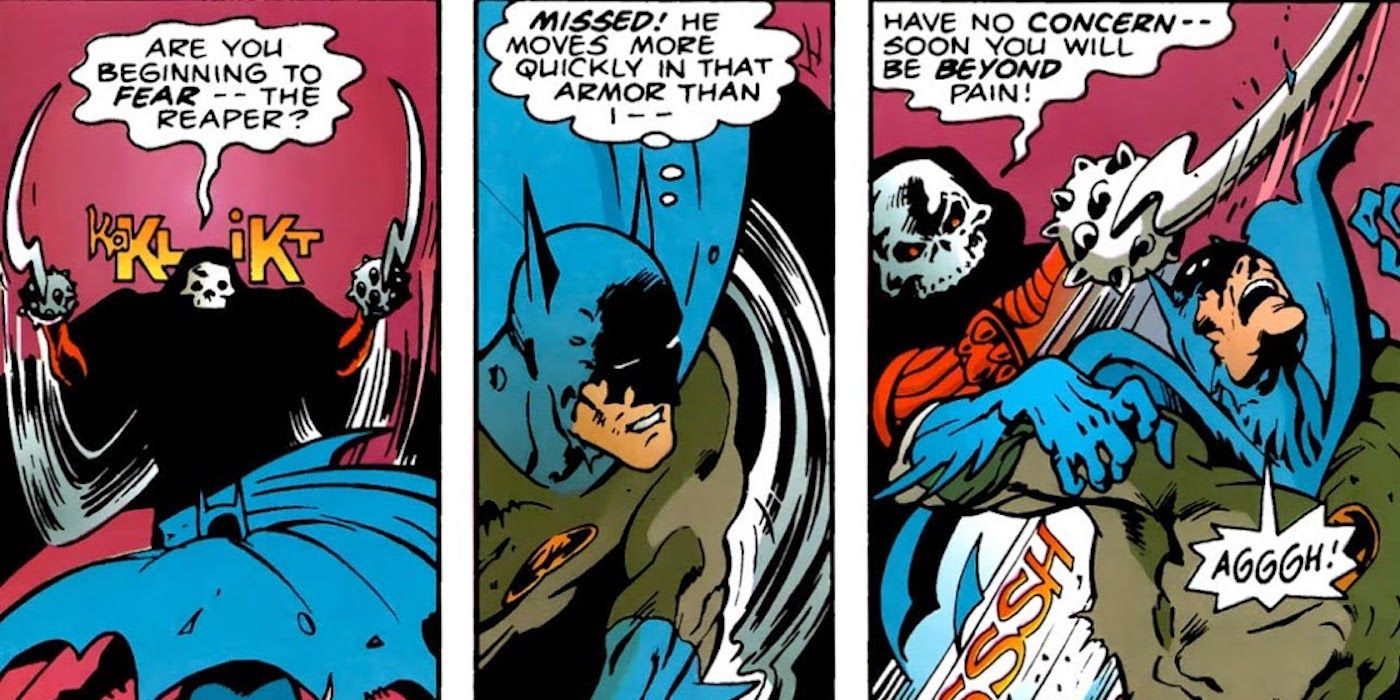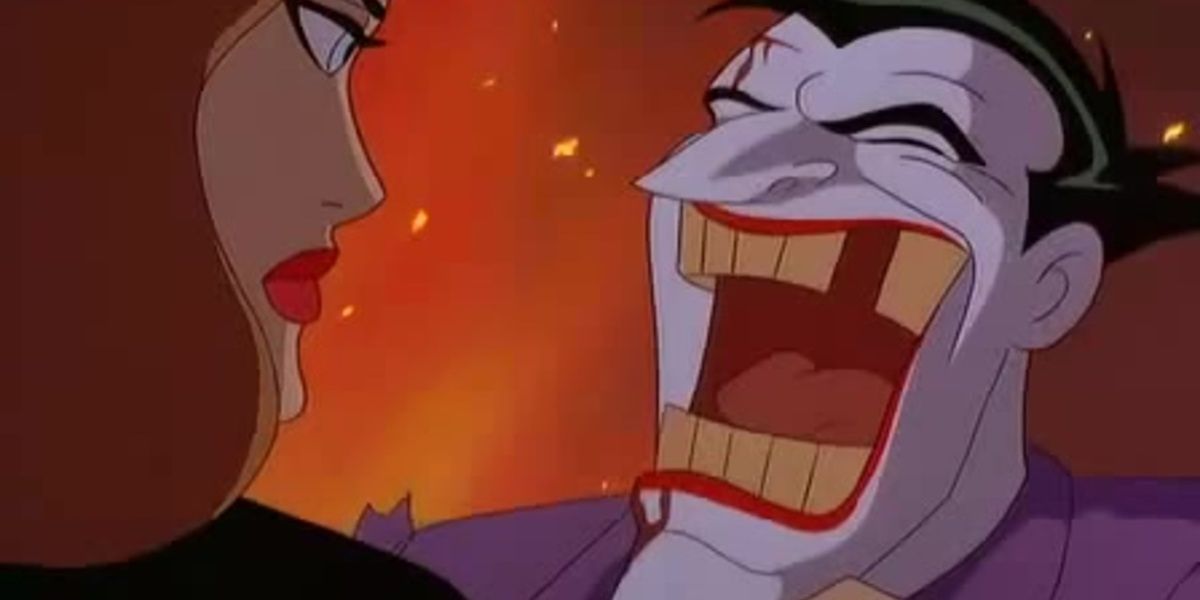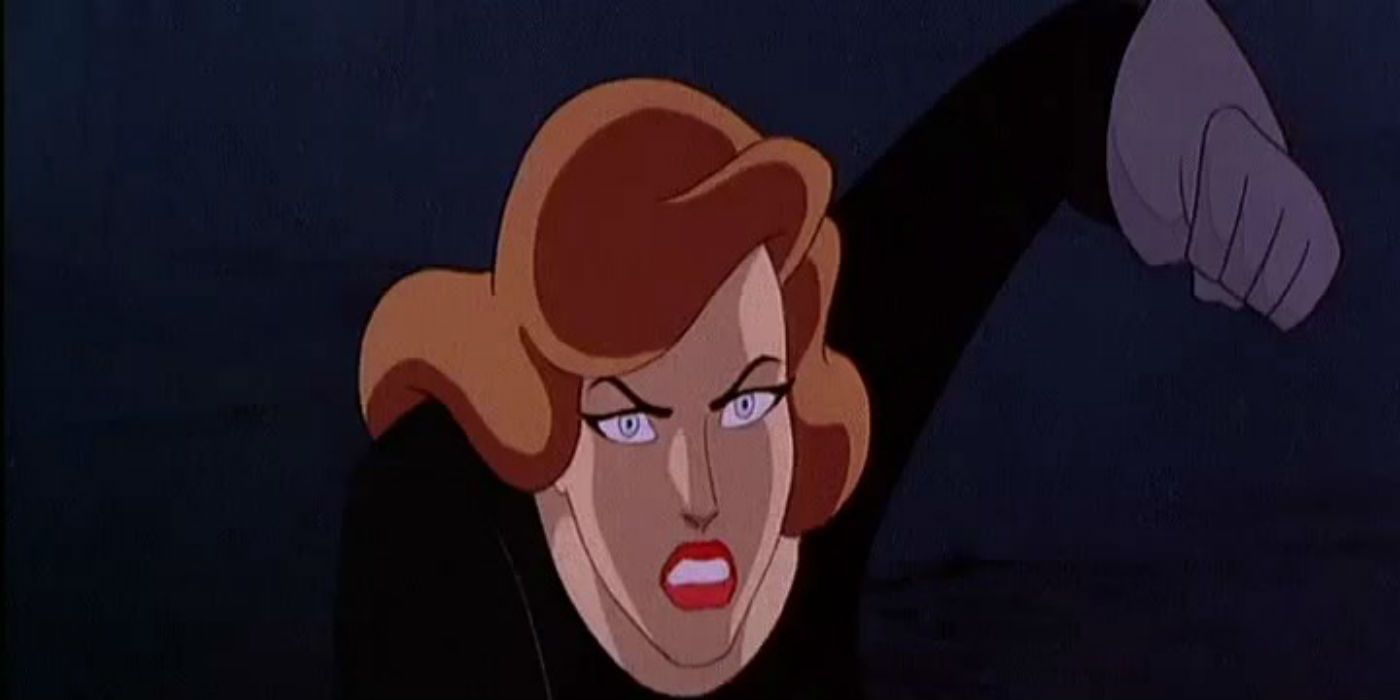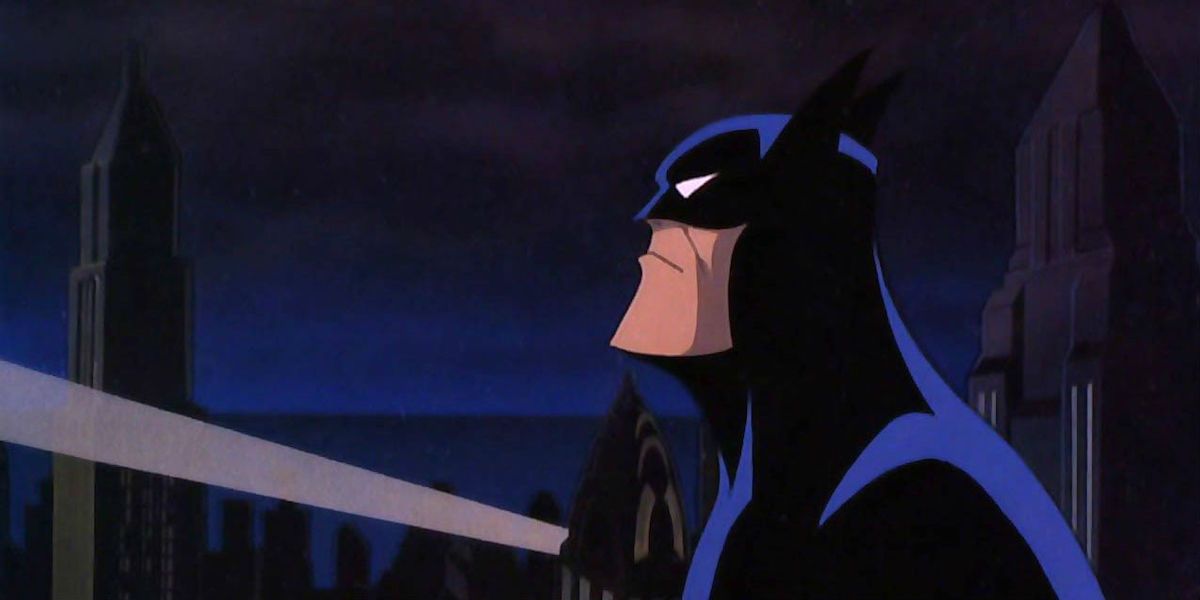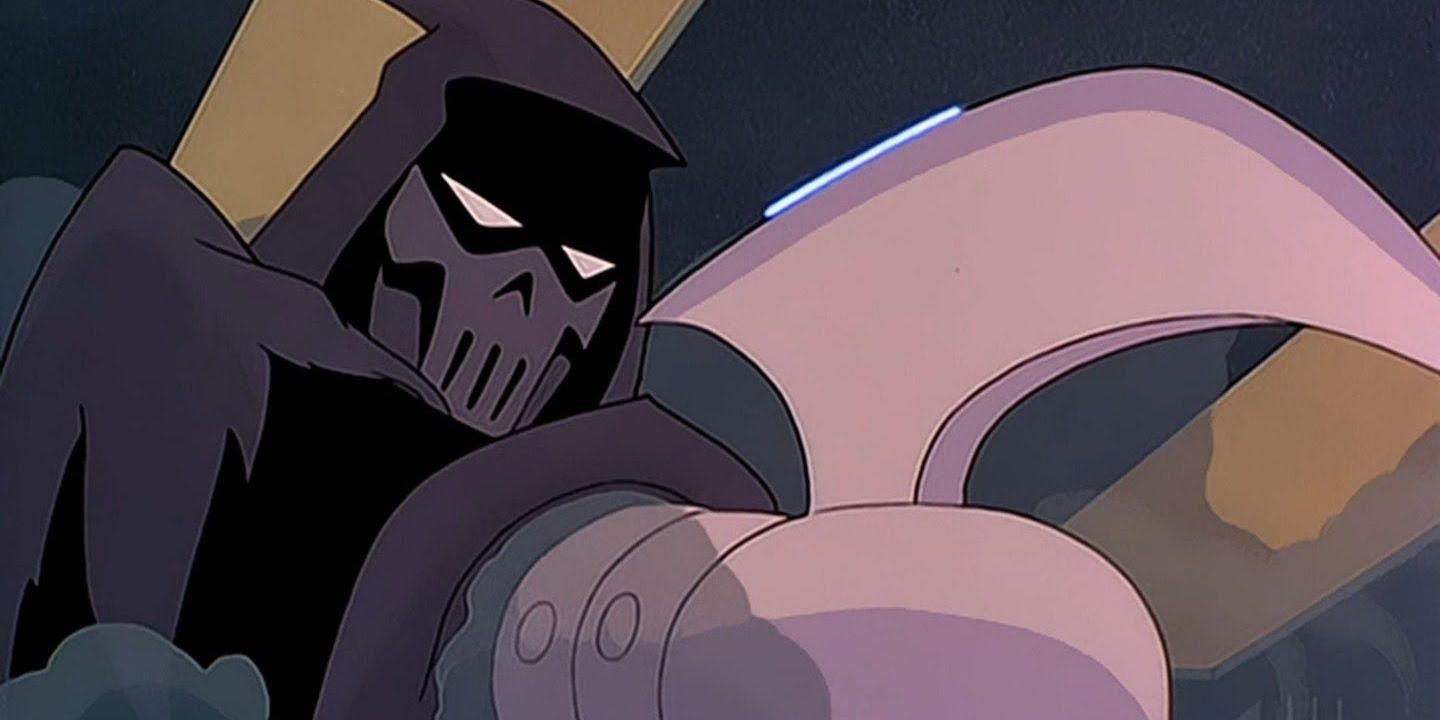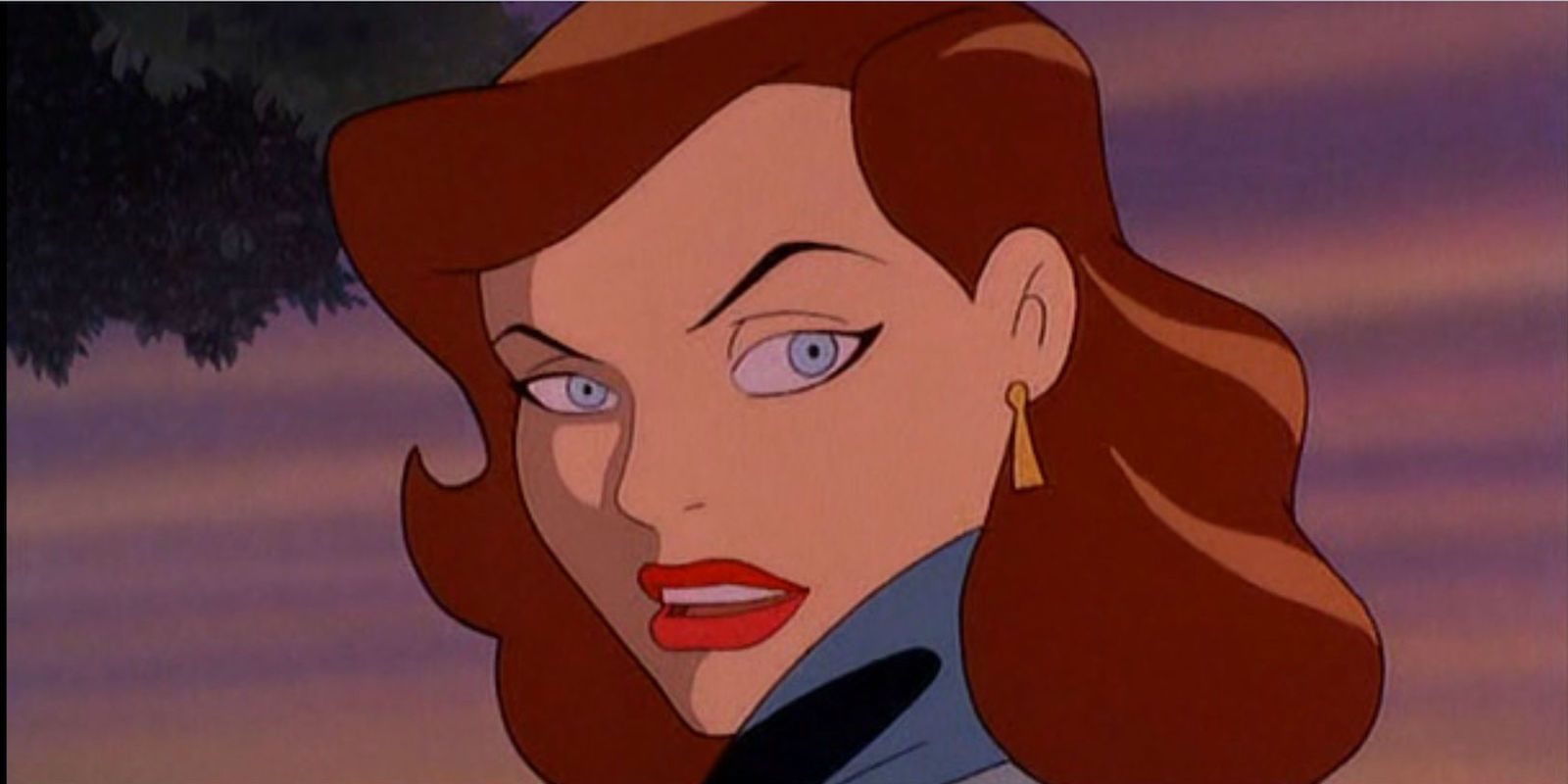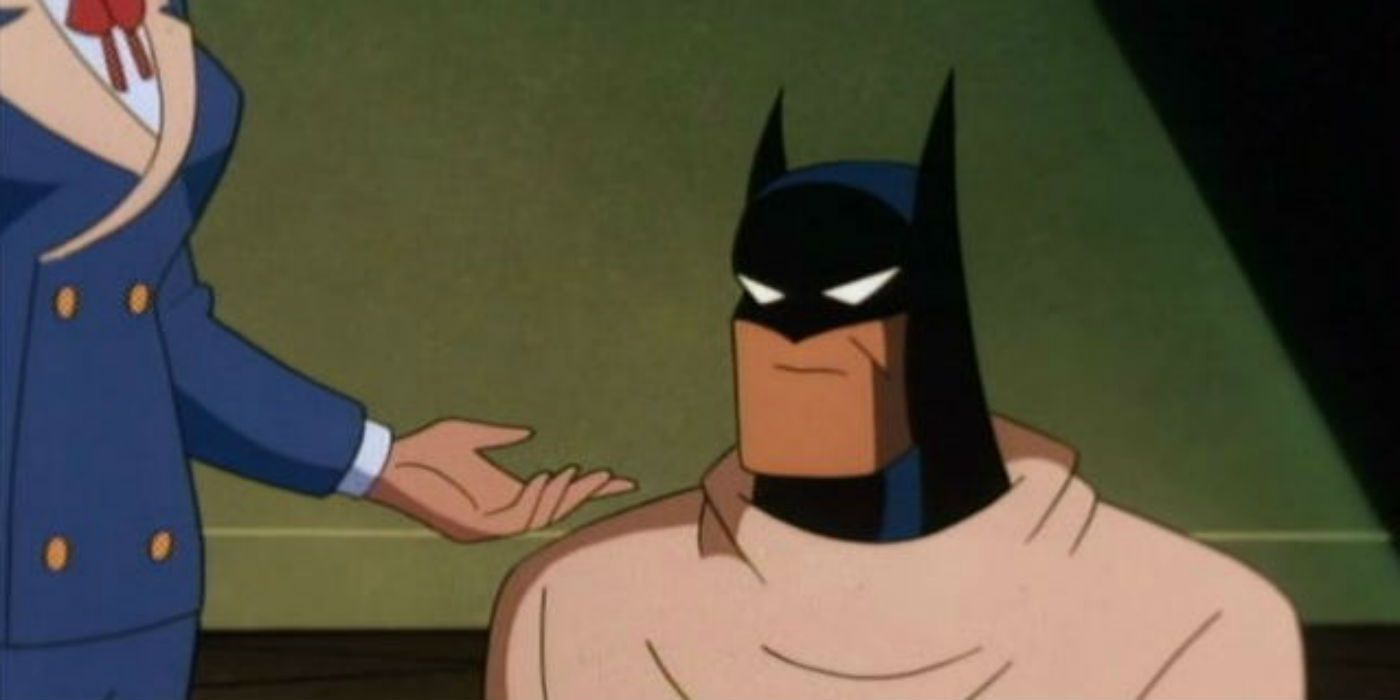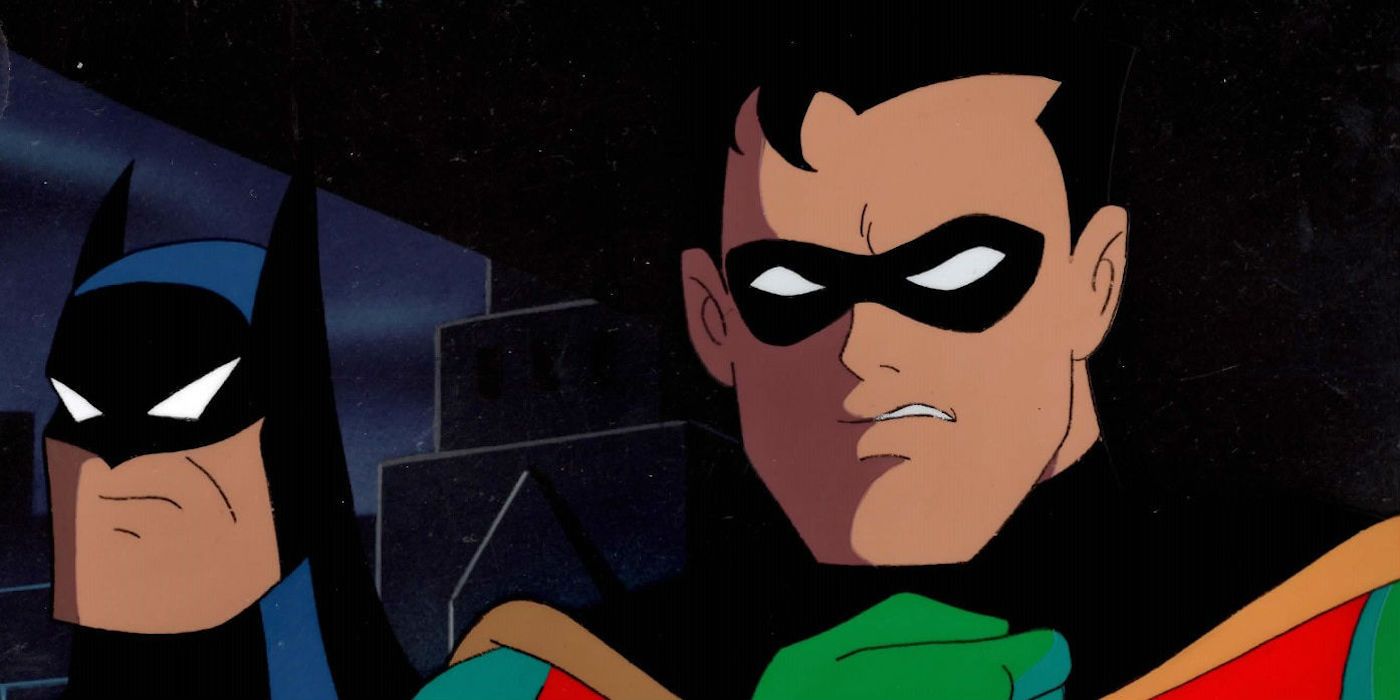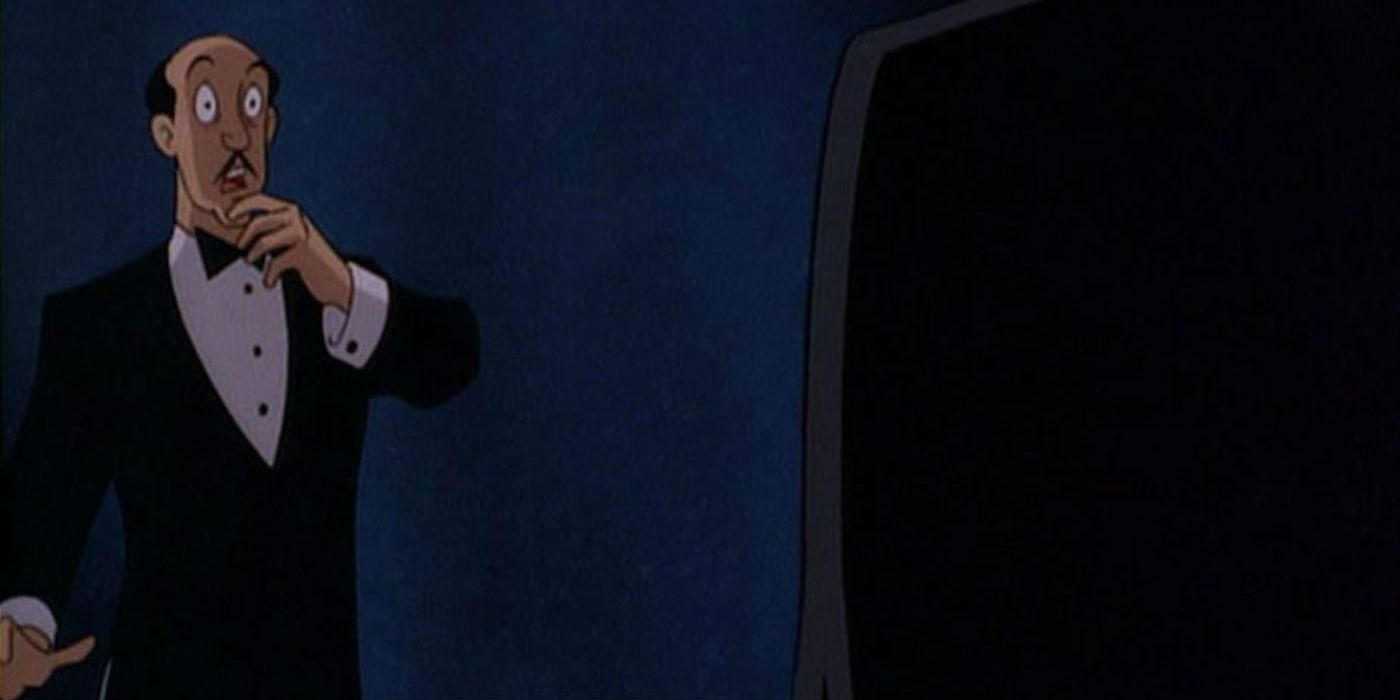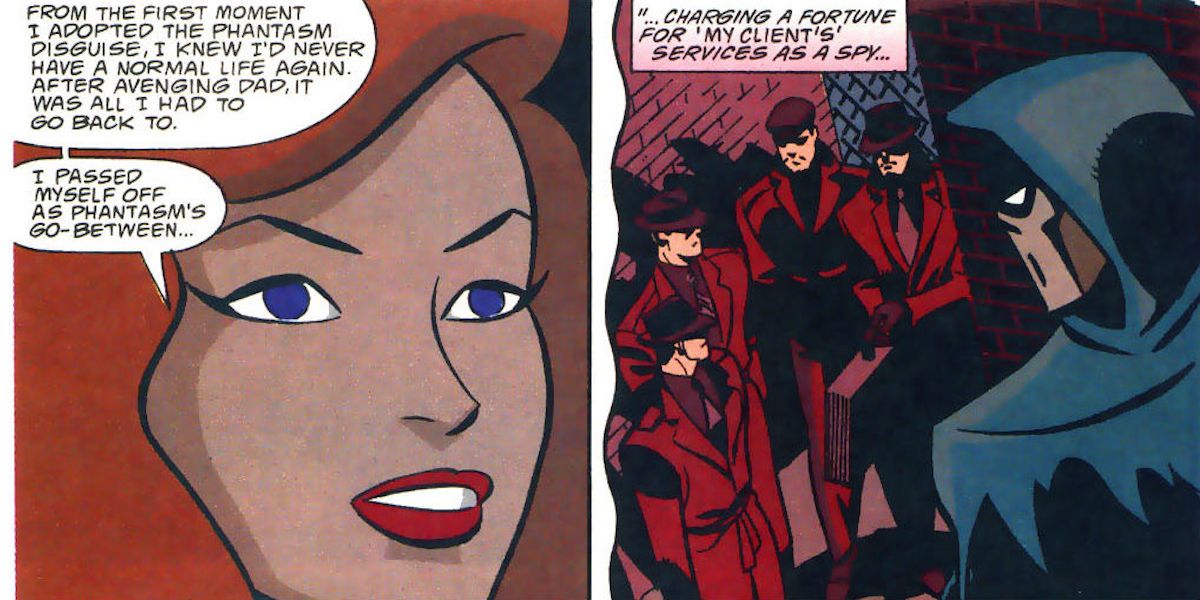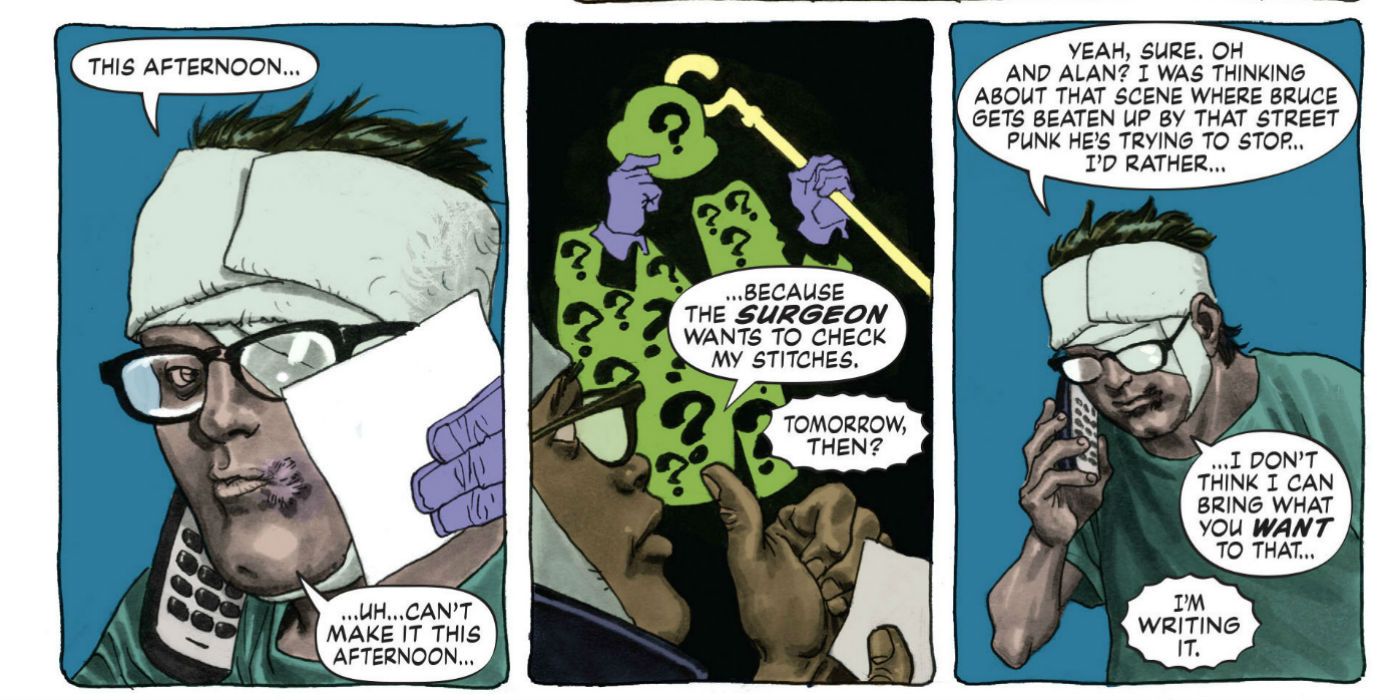Forget Tim Burton’s black-camp fairy tale. Renounce Christopher Nolan’s colorless realism. Ignore Zack Snyder’s Miller fetish. Mask of the Phantasm is the best Batman film of them all. From studio meddling to a brief production window, this film had everything going against it. When it was finally released, it bombed in epic fashion at the box office, but it later found new life thanks to home video and the internet.
The plot sounds simple enough: combining an original story and a present-day story, Batman deals with a new enemy just as an old love walks back into his life. There’s blood, tragedy, and the Joker. The components are all there, but it’s the way that they’re presented that makes this an atypical superhero film.
Going back and watching Phantasm again, you realize how great the writers were in adapting and altering Batman continuity, how classic films influenced it, and how much it has influenced the modern superhero movies of today. Whether you’re a fan already or you've never heard of it, we’ve gathered together some interesting facts and the forgotten history of one of the Dark Knight’s greatest stories.
Here are 15 Things You Didn’t Know About Batman: Mask Of The Phantasm.
15. It’s Referenced in Arkham Origins
Admittedly not one of the better Arkham games, Origins centers around a young Bruce Wayne with a bad haircut fighting crime during Christmas. Outside of Copperhead and Black Mask’s disco pimp suit, there’s not really all that much going on in the title, and it makes you wish the game’s story was developed from the references it makes.
Shortly after Bane attacks the Batcave, we’re made to look around the wreckage. Near the computer by the broken display cases, there are two letters on the floor written by Andrea Beaumont, Bruce’s former love and eventual enemy, the Phantasm. The letters are brief, with Andrea establishing that she’s in Europe on the trail of her father—boy, we sure hope the Joker didn’t kill him—and foreshadowing the tragedy that’s on the horizon.
It’s rare for any kind of Phantasm reference to be made in the DCAU or in any of the other Batman mediums. Whether this was an indication of a plot point that was supposed to be picked up on later, or if it was simply intended to be a fun reference for the eagle-eyed fan, has never been confirmed.
14. There are Sequels
There have been three sequels to Mask of the Phantasm. The first—and the only canon entry—is Shadow of the Phantasm, written by the original film's co-writer Paul Dini. (Fun fact: this story won an Eisner.) Taking place after the events of the film, Andrea Beaumont again returns to Gotham to find out who is behind the bounty put on Bruce Wayne’s head. Laughs are had, depression is deepened, consequences are explored, and Bruce and Andrea still don’t live happily ever after.
A few years later, current Spider-Man villain writer villain Dan Slott wrote another follow-up that saw Andrea return to hunt down the Black Mask. However, the cancellation of the animated Batman & Robin Adventures series led to the story never being finished. It was eventually revealed that the Red Hood, who had been causing problems for Batman, would be unmasked as Andrea Beaumont’s deceased mother Victoria, leading to major questions like: is it the entire Beaumont family that’s screwed up? Or is it something in Gotham’s water? Can it be both?
The final sequel, Mark of the Phantasm, takes place in the Batman Beyond era. The connection to the Phantasm is shoehorned and the much-awaited reunion between Bruce and Andrea takes place off-screen.
Best to just keep to Shadow.
13. The Other Batman Beyond Connection
In the controversial Justice League Unlimited episode “Epilogue,” penned by the late, great Dwayne McDuffie, we’re given a Secret Origin-style tale for Terry McGinnis. In the episode, he’s revealed to be Bruce Wayne’s biological son, made by Amanda Waller and Cadmus to grow up to replace his dear old dad as Batman. Since one of the Dark Knight’s main ingredients is tragedy, Waller planned to have Terry’s parents killed in front of him to mirror the tragedy Bruce once suffered through. She hired Andrea Beaumont to do it—in the intervening years, she became a hitman, which keeps in line with Dini’s comic—but Andrea is unable to pull the trigger at the last minute.
Andrea and Waller argue about it later, but we never hear what’s said. From what we’re given, we can infer that while tragedy is a necessary ingredient, visiting it upon the innocent is too ugly a thing, and using murder to create a new Batman tarnishes the legacy they were trying to continue.
For Andrea, this is also a nice piece of redemption. In deciding not to kill Terry’s parents, she was—at least temporarily—able to break the cycle of murder and revenge that not only created Batman, but the Phantasm as well.
12. The Phantasm is Based on a Lesser-Known Batman Villain
Batman: The Animated Series was very well known for its ability to remix, elevate, or even create characters. Harley Quinn and Renee Montoya were characters created for the show that proved popular enough to be adapted into the comics. The series took Mr. Freeze from a cookie cutter ice-themed villain and make him into a tragic figure, which proved popular enough for the comics to adapt it into their own continuity. The same goes for the villain known as the Reaper, who was altered to become the Phantasm.
For those of you who have never heard of Batman: Year Two; it’s a comic wherein Batman falls in love who a woman who believes her father is the Reaper, a scythe-wielding maniac. Much of Year Two’s plot is cannibalized for Mask of the Phantasm, but given greater depth and meaning. Andrea Beaumont is a fully-realized character with her own arc, she has a deeper connection to Bruce, and she's a total badass. Rachel Caspian, her Year Two equivalent, is a plot device. If forced to say something positive about her, it would be that her last name reminds us of the Phish song “Prince Caspian.”
Another fun fact: the Reaper showed up in the New 52 for a brief cameo, sporting a look more in-line with the Phantasm.
11. It Holds An Annie Award Record To This Day
For almost fifty years, the Annie Awards have been the Oscars for animation. Like the Oscars, the Annies are reticent when it comes to praising genre films like superhero adventures. Though they have honored the Fleischer brothers for creating Betty Boop and Popeye, as well as the rotoscoping technique, mention of their Superman serial from the '40s was glossed over entirely.
So it was a pretty big deal when Mask of the Phantasm was nominated for a Best Animated Feature Annie Award back in 1994. It didn't manage to bring home the gold, however, as it was topped that year by The Lion King (hey, when you're beat, you're beat). That said, it does have the dubious honor, twenty-three years later, of still being the only animated comic book feature to be nominated for the show's top prize.
Phantasm is not, however, the only superhero film to get some love at the Annies. Pixar's The Incredibles actually managed to notch a W for our heroes in tights when it took home the top prize ten years later at the 2004 Annie Awards.
10. The Studio Didn’t Want the Ending Ruined…
More often that not, the content of Batman: The Animated Series was essentially written for adults but marketed to children (ah, the good old days). For Mask of the Phantasm, the moratorium on blood, sex, and death was mostly lifted (those really were excellent days), so the writers pushed everything to the limit. None of DC’s animated movies would surpass its level of violence and adult content for decades, until the more recent entries of Under the Red Hood, The Dark Knight Returns, and The Killing Joke took things to the next level. But blood and guts wouldn’t be enough. The mystery had to fool the audience.
Stacy Keach was hired to play Carl Beaumont and the voice of the Phantasm (with slight electronic alterations). In the movie and on the toys, the he pronoun was always employed. While the clues about Andrea being the Phantasm in the movie are as subtle as a hammer, to kids, this revelation is Keyser Soze-level stuff.
After all those months carefully making sure there would be no leaks, Warner Bros. rewarded their employees by releasing the spoilers anyway.
9. …But Then Ruined it for us Anyway
In the end, Warner Bros. just wanted to sell some toys. At the time, action figures with removable masks were very popular. So, toy distributor Kenner produced a line of Batman figurines with removable masks—and what better way of advertising this than by actually showing the toy with the mask off? So, there was the Phantasm on the shelves, promoting her karate chop action, sans mask.
The only problem was that Mask of the Phantasm wouldn’t be released for weeks (and in some cases, months), so millions of kids had spoilers for a movie they likely didn’t know about yet every time they went into a toy store. But it did move product, and that’s what matters anyway.
Of course, if you were one of the lucky kids too poor or too far from a toy store, you wouldn’t even have heard of this until you were older. You're probably getting a kick out of this factoid, because you got to see the movie in a nearly empty theater as a kid and be totally surprised. Then again, seeing a movie in which the love of the protagonist’s life betrays him leaves you with trust issues that follow you through all your relationships, and seeing Bruce and Andrea end up miserable, isolated, and alone warped your ideas on how the rest of your life will turn out. But at least that twist really fooled you that time. Yeah. Worth it.
8. It Shares a Plot Hole with Batman Returns
In 1992, Warner Bros. released Tim Burton's Batman Returns. While the perennially misunderstood movie is the subject to unnecessary derision in some circles, everyone can agree on this one fairly obvious plot hole that detracts from the film entirely. Early in the film, Batman is framed by Penguin and Catwoman for murder. By the end, the bat signal ignites and he must answer the call—only, he never cleared his name. Nobody ever found evidence proving that Batman was innocent. Of course, it’s assumed that somehow it was taken care of off-screen, but, still, you’re left with laziness rather than a plot hole. The reaction to the oversight was loud enough that they wouldn’t make that same mistake again, right?
In 1993, Warner Bros. released Batman: Mask of the Phantasm. Early in the film, Batman is framed by the Phantasm for murder. At the end of the movie, the bat signal ignites and...damn it!
7. Warner Bros. Meddling Hurt the Movie
When Batman: The Animated Series became an incredible sensation seemingly overnight, Warner Bros. wanted to milk the Bat for all he was worth. They commissioned a feature-length straight-to-video movie that would be released between seasons to keep the interest of the kids. Only, at the last minute, after having seen how the writing team and the animating team upped their already impeccable game, they decided to release the movie in theaters. But only a limited release, opening Christmas Day, and with almost no advertising or promotional help. Mask of the Phantasm bombed at the box office, and somehow, Warner Bros. was surprised by this.
Mask of the Phantasm found great commercial success retroactively, thanks to home video and unanimous positive reviews, and it's since become an undeniable cult classic that is always this close to being mainstream. Warner Bros. never released another of their animated movies in theaters, save for the recent “event showings” of The Dark Knight Returns and The Killing Joke.
6. It Began a Trend in Comic Book Movies
A superhero considers retiring to be with his girlfriend and live a normal life. Sound familiar? Variations of the trope have been used in almost every Spider-Man movie, the Nolan Batman sequels, both Hulk movies, the Iron Man sequels, and was danced around in Age of Ultron. It’s a tedious plot line because we know, especially in the case of Batman, he’ll never retire. He’ll never stop. He’s too obsessive.
Well, Mask of the Phantasm is patient zero. Bruce meets Andrea just before he becomes Batman. They fall madly in love, and Bruce reconsiders his mission. As he put it, he never counted on being happy. Of course, things don’t work out because of the mob (don’t you hate it when that happens?) and so, the Dark Knight began. Years later, Andrea shows back up and they rekindle their romance. Bruce then wonders if he should continue being Batman, or try and lead a happy life with his one true love.
Naturally, this ends with a gloomy Caped Crusader hanging around some gargoyles.
5. The Original Movie Idea Became a TAS Episode
Originally, the beloved TAS episode “The Trial” was supposed to be the feature-length movie. However, Alan Burnett had the idea of a sprawling love story/Citizen Kane concept idea he wanted to explore, which became Mask of the Phantasm. The concept of “The Trial” was considered too brainy, and it required Batman to be immobile for a good chunk of the narrative. It was then decided that their Phantasm idea had a film’s scope, while “The Trial” could be pared down into an episode.
Ironically, both the writers and fans felt that “The Trial” would’ve worked better as a two-parter, and at that length, wasn’t all that far from Phantasm’s actual runtime. While the script was cut, if you look at the episode, you can see a certain edge that would’ve been perfect for a movie. The bad guys are uglier than usual; Mad Hatter’s vicious “I’d have killed her first!” is partnered with deep psychological explorations of Batman and his villains and questions about the cyclical nature of crime. If the script had been given more room to breathe—if maybe it switched places with the animated film, Batman: Sub Zero, which felt more episodic anyway—we could’ve had our cake and ate it too.
4. Dick Grayson’s Absence Explained
To keep the narrative streamlined, focusing on the important players of Batman, the Joker, and the Phantasm, the writers excised Robin from the script. This was done not only for the sake of the narrative, but also because of the deeply personal nature of Batman’s story. Since the production of Phantasm and its release were so far apart, as well as the insulated nature of the script—which included no references to other episodes or characters—it was never clear when the story in the movie actually takes place. In the comic book adaptation, it’s revealed that Dick is away at college when the story picks up, which technically places Phantasm ahead of a season that hadn’t yet premiered.
Given later references (and lack thereof), it’s likely that Dick Grayson heard about Batman being framed. He'd probably even heard of the Phantasm, but never about Andrea. It not only plays to the personal and private nature of what happened, but also to that closed-off paranoid view of the world that Bruce Wayne often has. He’ll only tell you what you need to know, and he’ll never let you know how human he actually is.
3. The Movie was Inspired by Citizen Kane
Batman: The Animated Series always wore its film noir and art deco influences on its sleeve, and Mask of the Phantasm is clearly influenced by Citizen Kane. Both movies are told through flashback, illuminating the transformation of complicated characters as their lives begin in struggle, find some measure of balance, only for things to become untenable before the end. Their decisions darken their lives and drive a permanent wedge between them, as it had for Charles Kane and his many wives.
For Kane, the losses lead him to becoming an island of a man, a mystery, a transformation that mirrors Bruce's, who goes from speaking softly to Alfred to using his gravelly Batman voice even when they’re alone. Alfred’s terrified “My God!” to seeing Bruce in costume for the first time isn’t a reaction to the mask, but a final confirmation that the little boy he tried to save is lost forever.
In Andrea’s case, it’s even heavier. She’s the true Charles Kane of the story. From humble, happy beginnings, the evil visited on her damaged her so severely that she crossed the line Batman never would. Bruce is then left to wonder how powerful the darkness is that it can take cheery Andrea and turn her into a prolific murderer.
(This is a PG kids movie!)
2. The Phantasm is never actually called the Phantasm
That's right, the Phantasm was never actually called the Phantasm in the movie. It wasn’t until Paul Dini’s Shadow of the Phantasm that the character’s moniker was used. In terms of the film, however, the lack of a name makes the Phantasm more effective. Symbolically, it’s a ghostly grim reaper figure immune to bullets and powered by hate. It doesn’t need a gimmicky name to scare the living hell out of you. Though, by the end of the movie, we know its name: Andrea Beaumont.
We’re never given an answer as to how Andrea received her training or how she developed the uniform. Taken as a pure metaphor, the Phantasm is who she is and how she views herself. She’s the angel of death. Nothing physical can stop her because she is sustained by her mission, by her need for revenge, and yet she’s almost like a ghost. In truth, she’s been dead on the inside for a while; the figure we see as the Phantasm is what her very soul looks like now.
At least the next entry can’t be more depressing…
1. Paul Dini was Inspired by his own Mugging, Beating
…Damn it.
Revealed in his recent graphic novel Dark Night: A True Batman Story, Paul Dini was the victim of a brutal beating and mugging while Phantasm was in early production. The attack required multiple surgeries to repair the physical damage, while the psychological wounds festered. Like any good writer, he used it as an outlet for his work. He pitched a Sandman crossover story that never made it beyond the concept phase; when that didn’t take, he focused on the upcoming Mask of the Phantasm.
Dini was supposed to write Bruce’s beating at the hands of thugs at the film’s turning point. While his duties were scaled back some to allow for his healing (Alan Burnett gave the beating scene to Michael Reaves), Dini was responsible for much of the film’s darkest elements and most emotionally raw moments. The Joker is substantially more pathological and deadly, his humor is notably darker, and the structure of the flashbacks carefully getting progressively worse...it's all Dini. Most of all, he’s responsible for Bruce’s graveside breakdown as he begs his parents to let him be happy.
While Dini’s talent has never been in doubt, the sense of tragedy in the Phantasm found a clear driving force in his own trauma.
--
Where does Mask of the Phantasm land on your list of your favorite Batman movies? Let us know in the comments!

